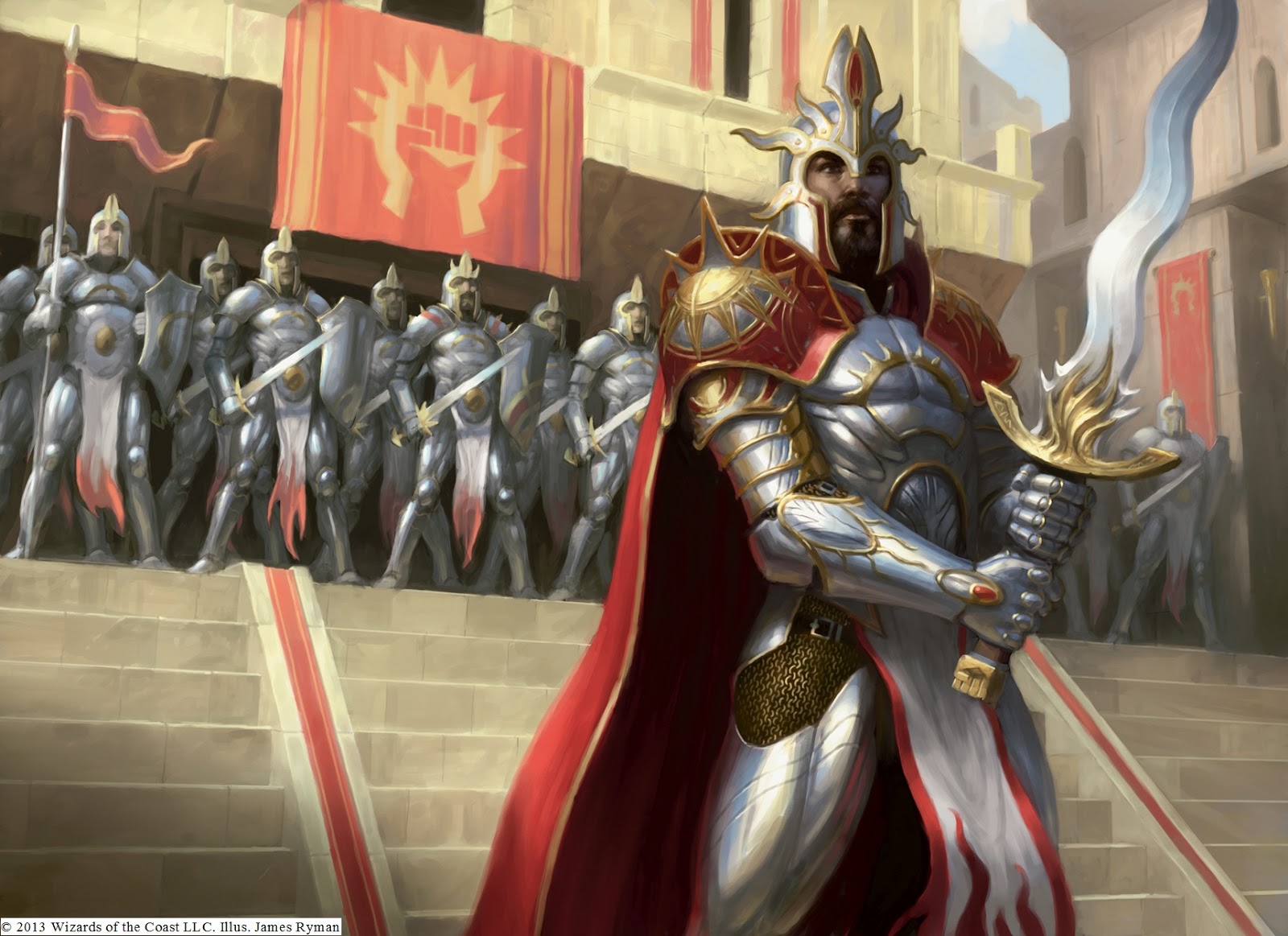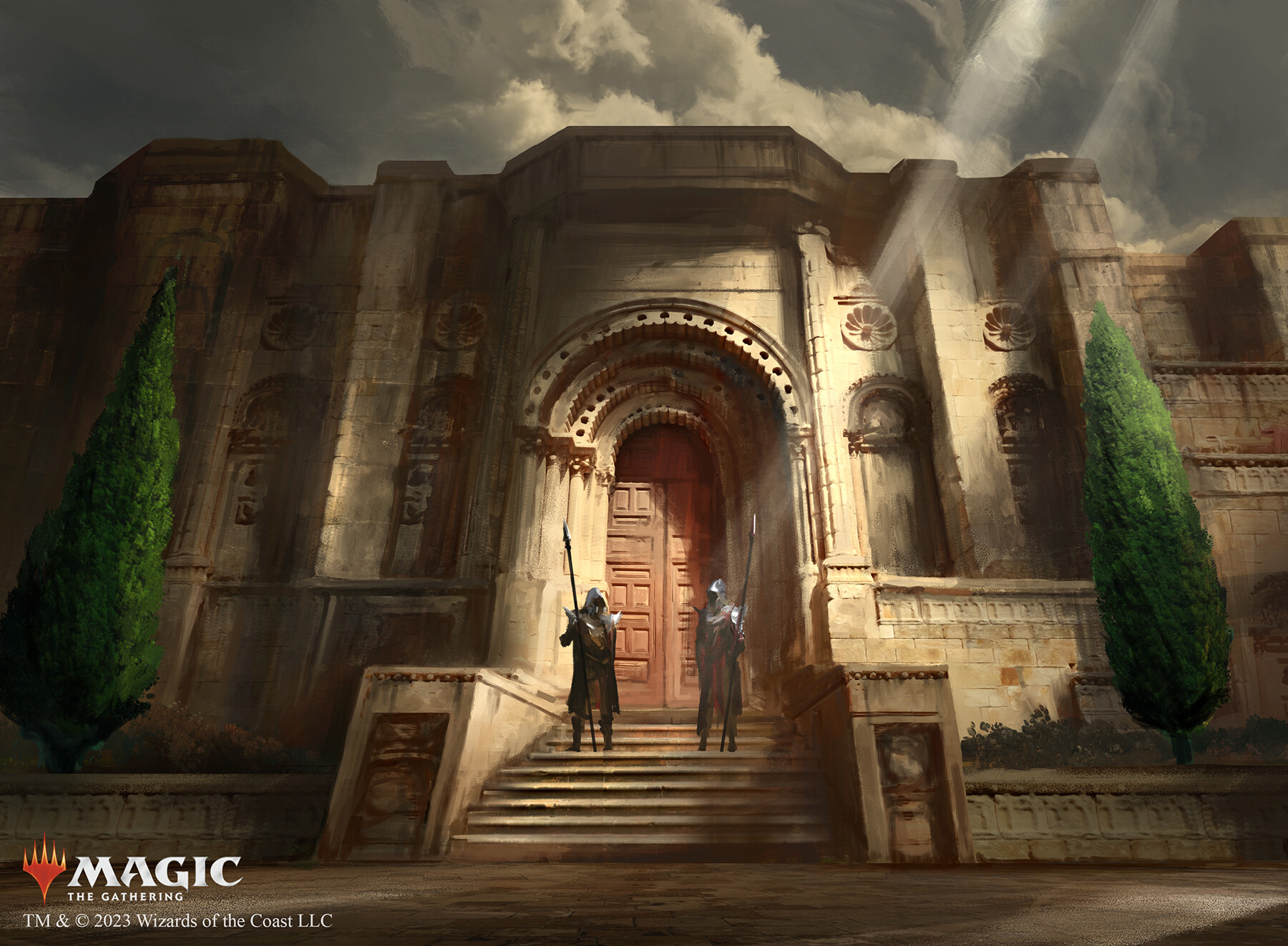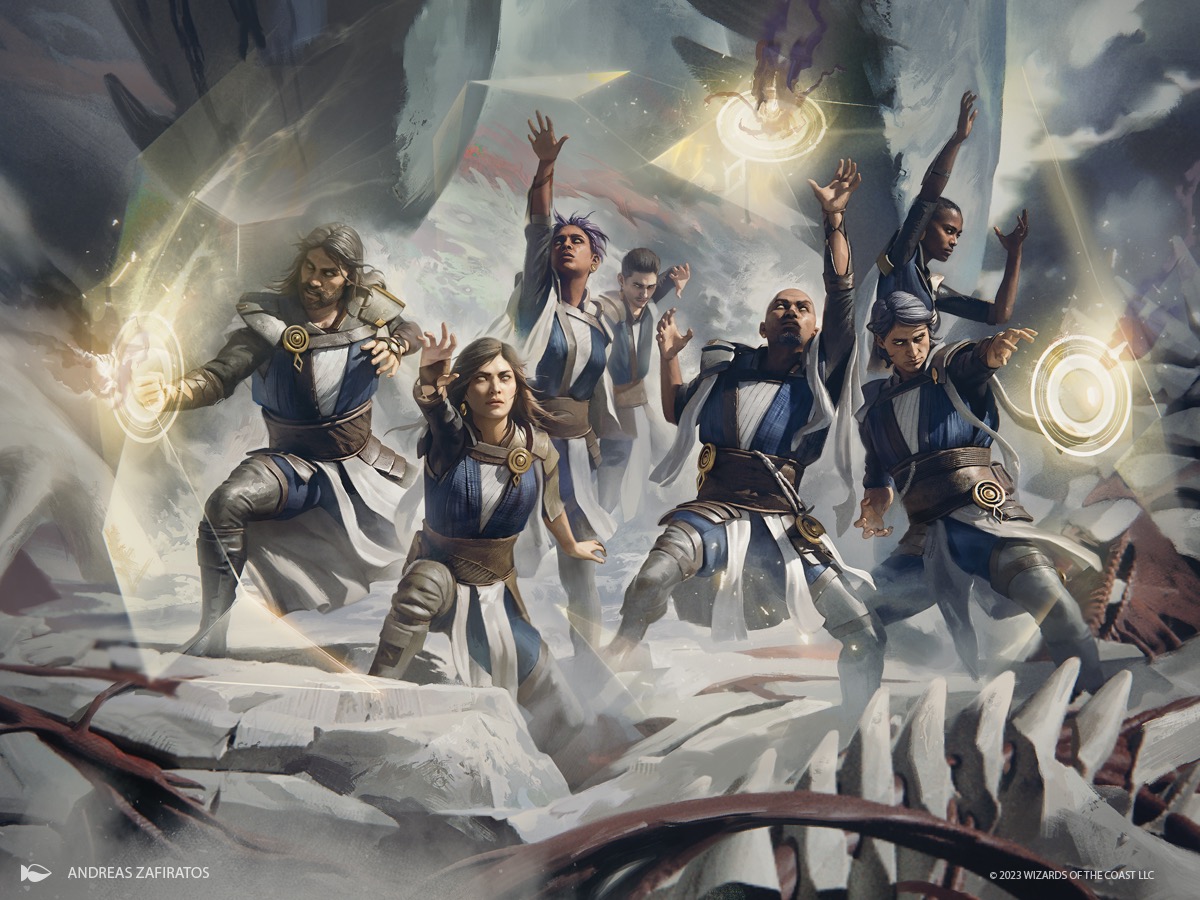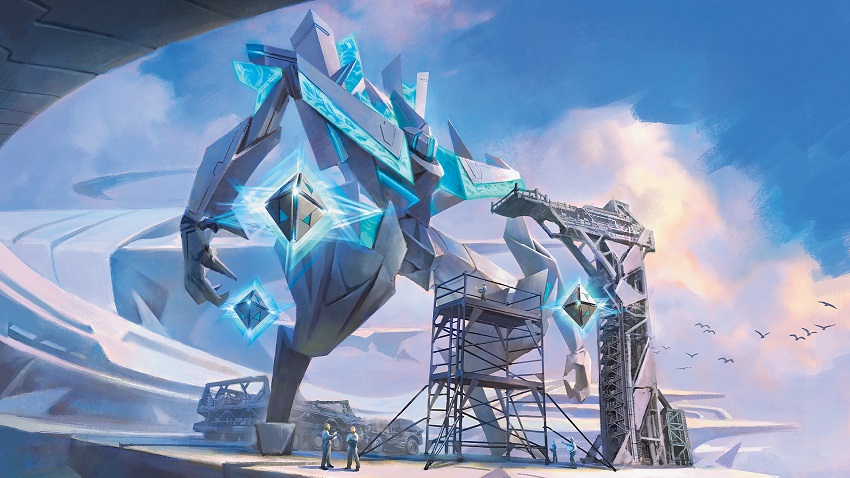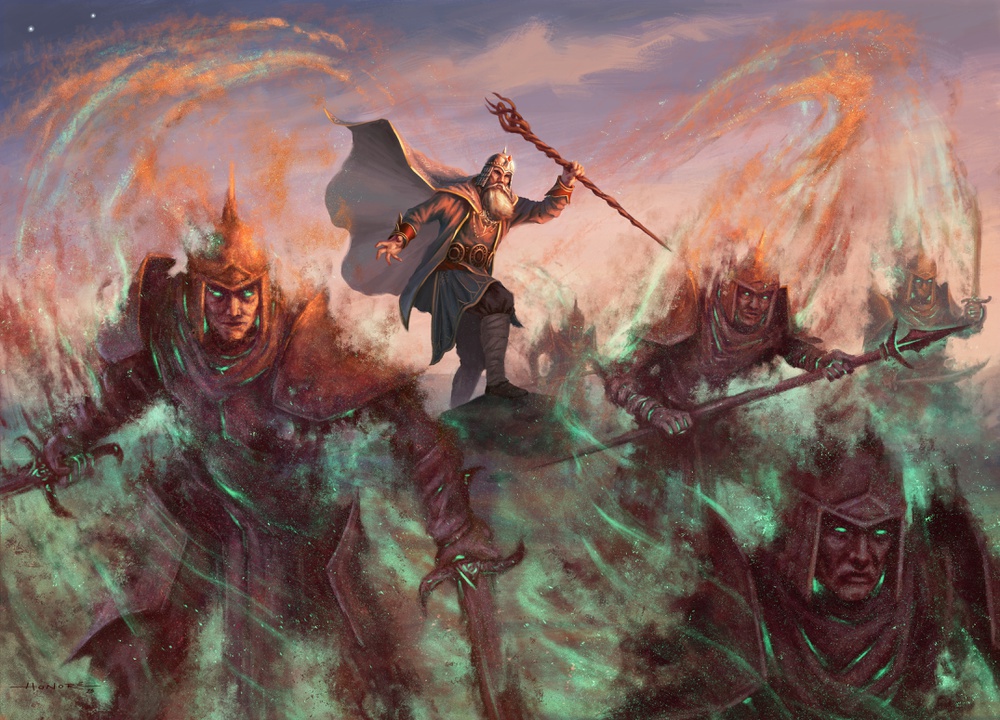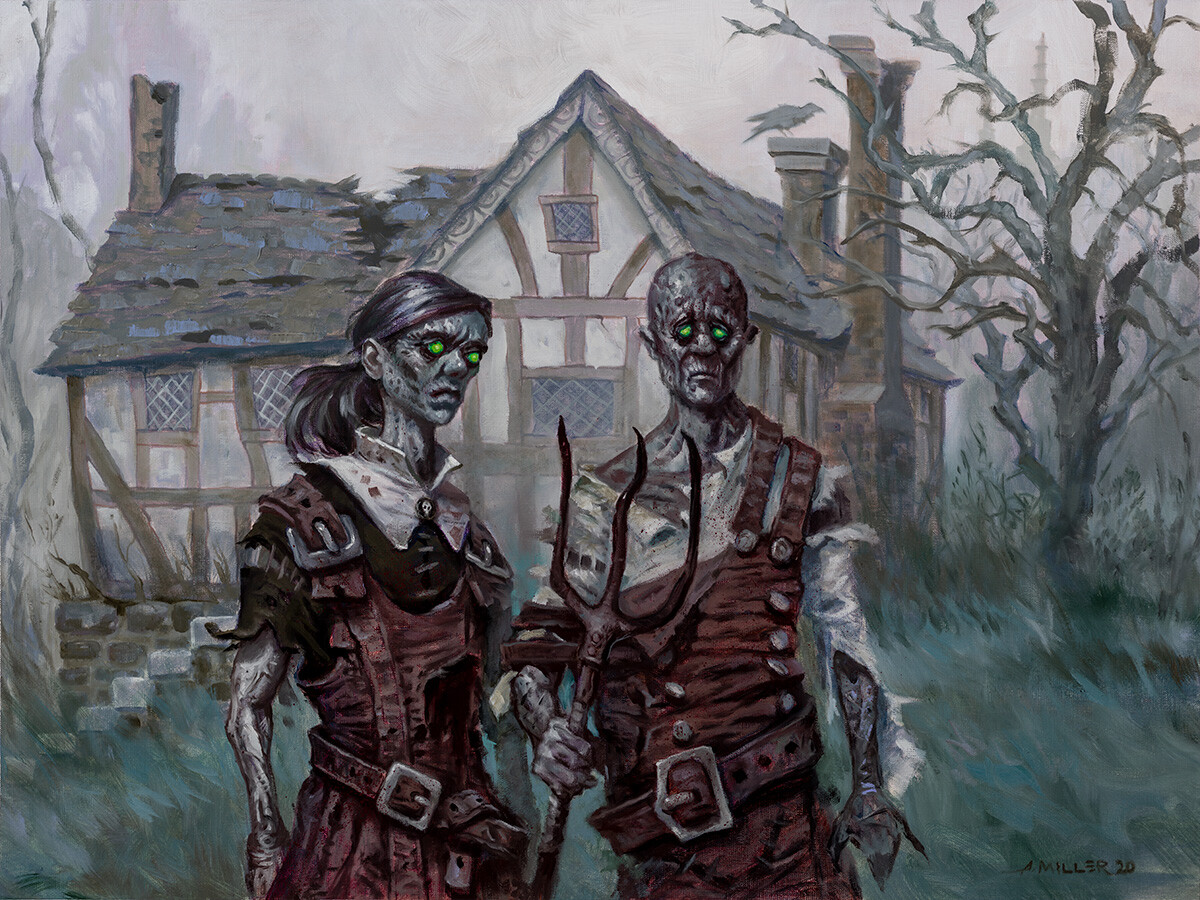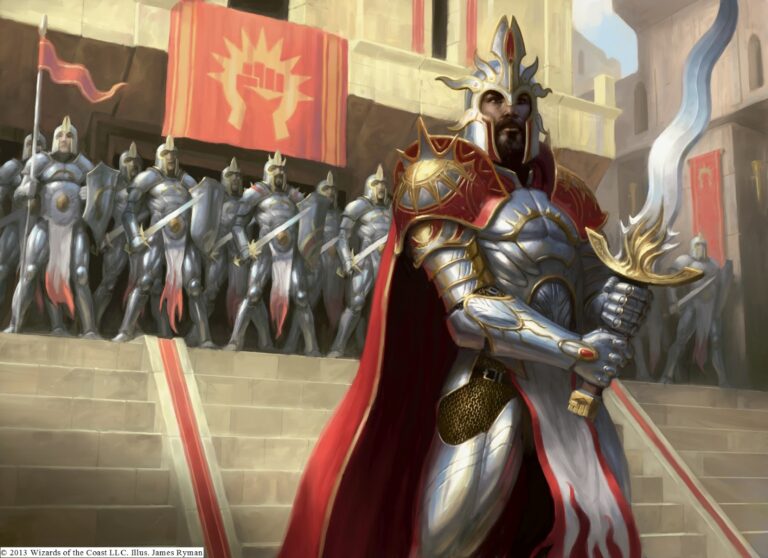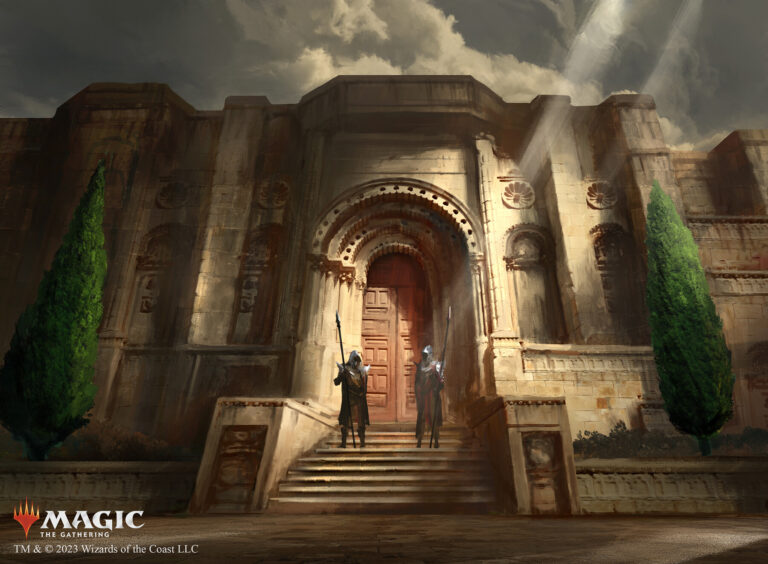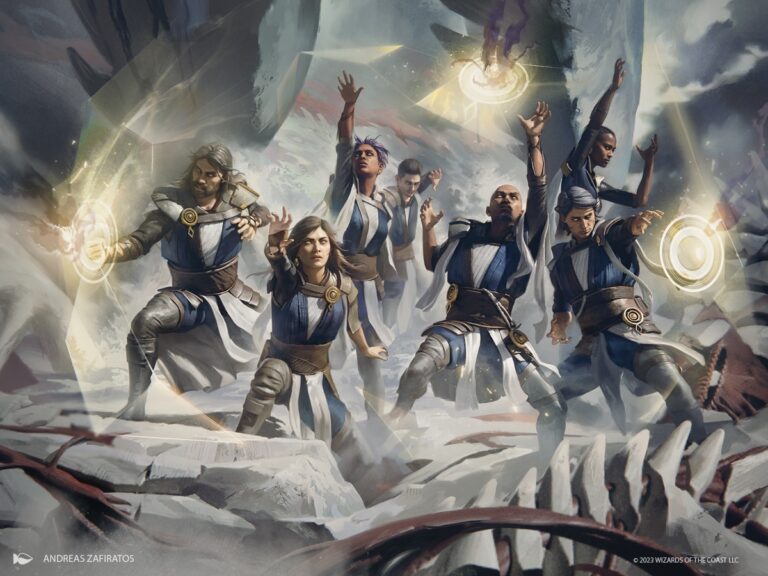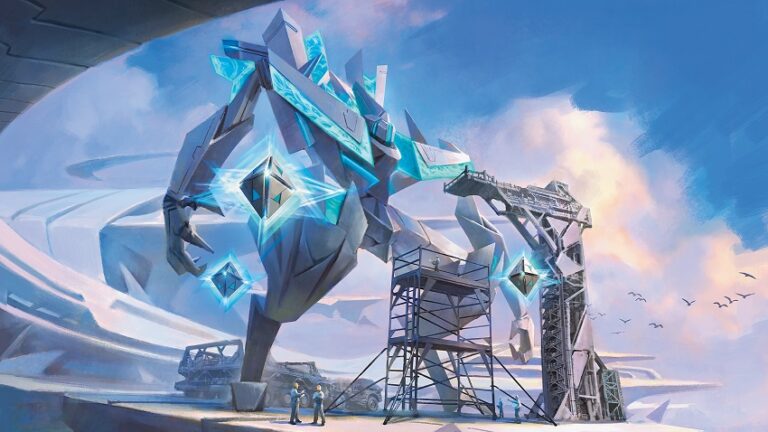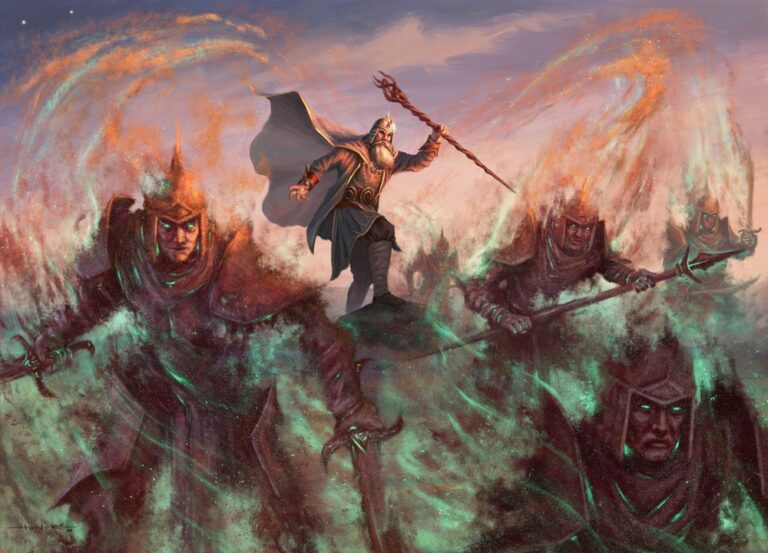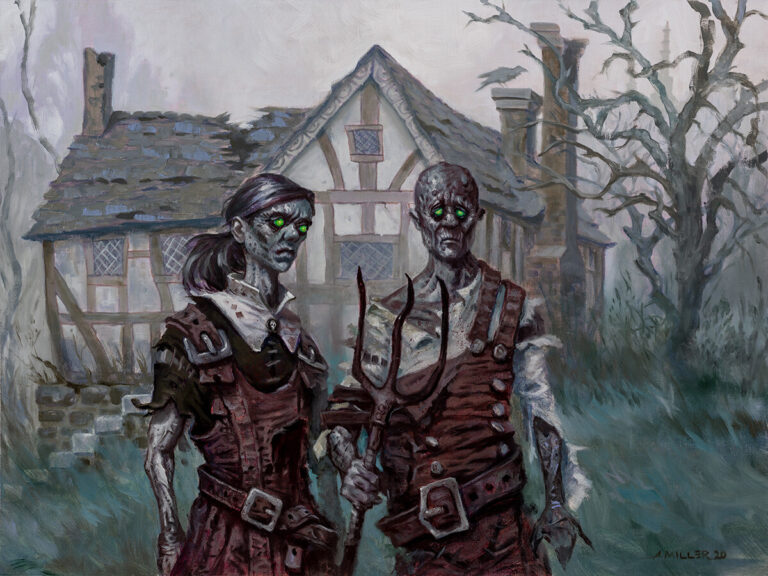Hello everyone! I’m Andrea Bosco (Re del Commander on Moxfield), a passionate player of this game since its inception. I’ve played and continue to play various formats, but my main focus is definitely Centurion. I enjoy experimenting, exploring new interactions, and having fun building original decks, as well as improving established and well-known ones. I love diving into the smallest details to get the best out of every single card, testing different decks and archetypes.
I hope these articles can help new players and provide a critical perspective for more experienced ones. Happy reading!
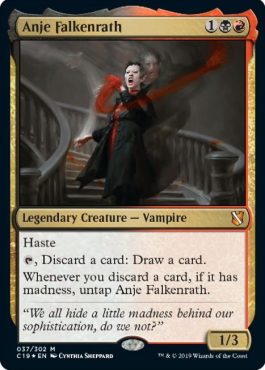
Anje Falkenrath has truly interesting potential, opening up gameplay mechanics and interactions that make matches both fun and engaging. The real strength of the deck lies in grinding with the Commander, searching for pieces with a reanimation focus, and digging through the deck as much as possible. Anje’s powerful ability to untap by discarding, even multiple times in a turn, allows for extensive card draw, providing quality plays and significant mana savings through the madness mechanic.
Anje is an incredible engine, offering impressive card selection. With madness spells in the graveyard and her ability to untap, this vampire truly enables some amazing plays.
Gameplay Scenario: At the end of your opponent’s turn, you discard a Fiery Temper to cast Thrill of Possibility. Anje triggers and untaps, allowing you to discard Archon of Cruelty and draw a card. You then untap, reanimate the Archon, trigger its effects, discard Anger and attack. With all these triggers in play you’re probably going to win the game…
Anje Falkenrath is a “vampire” creature with a converted mana cost of 3 and haste with an intriguing activated ability “Tap, Discard a card: Draw a card” but also with a trigger ability which makes our commander even more interesting “Whenever you discard a card, if it has madness, untap Anje Falkenrath“.
The premise seems interesting, right? So, without further ado, let’s proceed with a step-by-step analysis of my decklist.
Deck structure
Initially, the deck used a control-oriented approach, but due to RB’s limited capacity to handle opponents’ top-deck manipulation, it shifted to a faster reanimator strategy. This change led to the inclusion of Rite of Flame, Dark Ritual, Lotus Petal, and Simian Spirit Guide to quickly dig through the deck and execute one of the combo lines, like Worldgorger Dragon with Animate Dead/Dance of the Dead/Necromancy, Sedgemoor Witch with Chain of Smog, or Hoarding Broodlord with Saw in Half. This adjustment streamlined the deck by lowering the curve and number of lands, reducing flood issues and allowing for faster combo execution.
Of course, it’s a challenging deck to play because the “graveyard” plan faces numerous and formidable threats like Dauthi Voidwalker, Deathrite Shaman, Scavenging Ooze, Bojuka Bog, Rest in Peace, Endurance, Unlicensed Hearse, Kaya’s Guile, Cling to Dust, and Agatha’s Soul Cauldron, which make the graveyard strategy unstable and vulnerable. This requires careful spellcasting with a deep understanding of the meta, anticipating opponents’ moves, and avoiding risky plays like the Worldgorger Dragon combo, which can lead to losing all permanents if the dragon is removed while its ability is on the stack. The deck includes high converted mana cost cards, but their madness cost allows them to be played affordably and at instant speed.
The deck features numerous tutors to choose the best and fastest path for executing its strategies. Additionally, since the deck is particularly unbalanced in terms of aggression or defense, responses are limited (for example, the absence of Toxic Deluge), which allows for playing more proactive rather than reactive cards (like Fury and Harvester of Misery). With experience, victories can still be achieved even under Rest in Peace effects because the initial fast plan can be shifted to a late plan, allowing for sequential play of powerful pieces (i.e. Sneak Attack), potentially enabling a slightly safer combo execution.
Gameplan
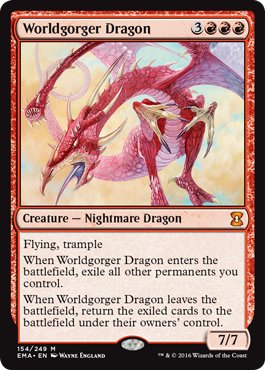
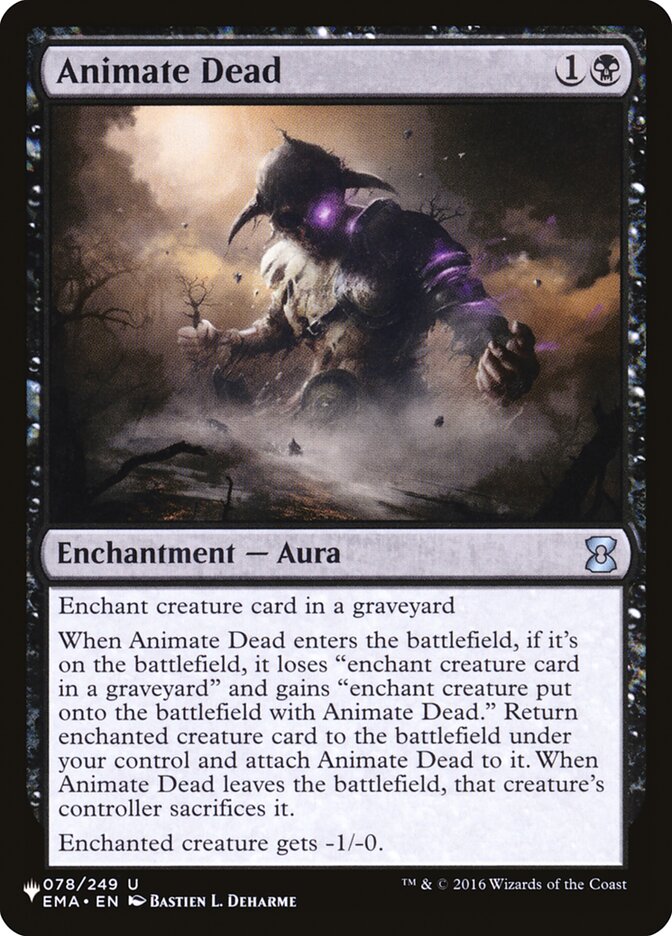
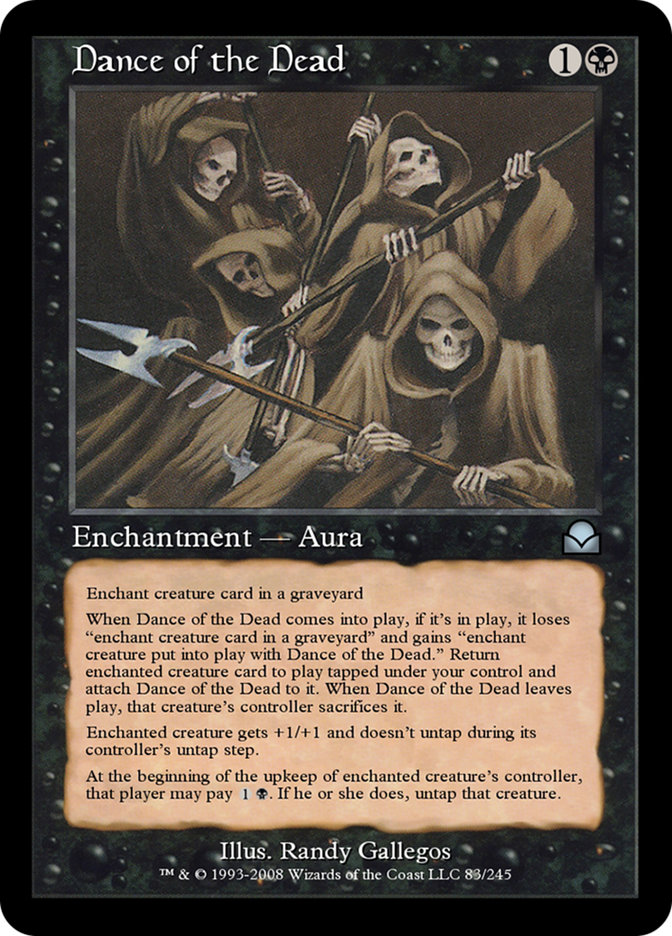
Regarding the Combos:
- Worldgorger Dragon reanimated with Animate Dead, Dance of the Dead or Necromancy: this is the most straightforward and feasible combo, though as mentioned, it’s also the riskiest. hen reanimated, the dragon exiles all your permanents, including the aura. This causes the dragon to be sacrificed and then returned to the battlefield, re-triggering the exile effect. During this loop, you can use exiled permanents (like tapping lands for mana or using abilities) until you reanimate another creature or have enough mana to cast additional spells and close out the game. Cards like Raucous Theater, Bitter Reunion, and Currency Converter help find creatures and with enough mana you can use cards like From the Catacombs to reanimate and set up for lethal damage, maybe with Anger in the graveyard.
- Sedgemoor Witch with Chain of Smog: with the witch on the battlefield, you can target yourself with Chain of Smog (discarding all but one of your cards, which will be given to your opponent), generating an “infinite” number of Pest tokens ready to attack your opponent.
- Hoarding Broodlord with Saw in Half (not in my list) works as follows: when Hoarding Broodlord enters the battlefield, you can tutor for Saw in Half and cast it using convoke. This splits the dragon into two tokens, each of which tutors for a card. One token can find Burnt Offering, which generates 8 mana by sacrificing a token, while the other can find a reanimation spell to return the original Hoarding Broodlord to the battlefield. With the mana from Burnt Offering and Yawgmoth’s Will you can cast Saw in Half again, continuing the cycle of tutoring and reanimating. This loop can be closed with cards like Tendrils of Agony or Professor Onyx combined with Chain of Smog.
In general, it’s advisable to keep hands with at least a couple of lands and ideally a cantrip, a reanimation spell, or a creature to reanimate. As a combo deck, don’t be too conservative with mulligans (even going down to 5 if necessary); instead, look for explosive hands or those that can present challenges to your opponent from the early turns.
Let’s take a look at the different matchups.
CONTROL
Against control decks, it generally works well (since Anje is a combo, it fits the bill). Threats are always looming and the blue player often can’t afford to tap out. The strategy is to dig through your deck effectively, manage your discard carefully and cast threats in crucial turns. Watch out for potential Stifle or similar cards targeting enter-the-battlefield effects.
COMBO
Against combo decks, it’s largely in the hands of Lady Luck. It depends on who gets to go off first and who can race faster (though Anje could be considered the female equivalent of Usain Bolt, so watch out…).
MIDRANGE
Against midrange decks, caution is crucial, as they come with numerous and sometimes unpredictable threats. This is where player skill becomes essential. Always try to avoid risky plays and stay clear of particularly troublesome situations, such as facing Opposition Agent, Orcish Bowmasters, Cling to Dust or Endurance.
TEMPO
Against tempo decks, pay attention to creatures that can be cast at instant speed. Generally, this archetype has limited but efficient answers so it’s crucial to go through the discard package before making your move.
AGGRO
Against aggro decks, the key is to manage your time and resources wisely, especially your life total, to avoid unnecessary resource drains. Wait for the right moment to deploy your graveyard threats, which, with their enter-the-battlefield effects, can significantly shift the balance and are difficult to remove or counter with brute force.
Meta calls and open slots
- Harvester of Misery: this card discards itself, acts as a small removal spell and, when reanimated, can clear the board of annoying small creatures (such as insects from Grist, the Hunger Tide, Magda, Brazen Outlaw, saprolings from Slimefoot and Squee etc.).
- Toxic Deluge: is notably absent from the deck because it conflicts with the deck’s fast-paced, aggressive strategy. The deck, built around Anje Falkenrath, focuses on quickly executing its game plan and often can’t afford to tap out for a board wipe. Prioritizing reanimation targets like Fury or Harvester of Misery aligns better with the deck’s goals, as these cards are more effective in advancing its strategy and dealing with threats while maintaining momentum.
- The One Ring: this card allows excellent deck digging. It can be cast quickly with the help of rituals or Phyrexian Tower and under the Worldgorger Dragon combo, it can serve as an alternative to Anje, entering untapped each time. Although it has a high mana value, once you manage to cast it provides an extra turn to draw acting as a good time-walk effect.
- Vilis, Broker of Blood: essential for its massive body and card draw engine. When reanimated with Reanimate, it allows drawing eight cards as it enters the battlefield while you lose life. It also enables card draw when you take damage and can be used to remove troublesome pieces with one black mana and 2 life. There are great interactions when losing life with The One Ring, Bitter Triumph, Mount Doom, Sulfurous Springs, Mana Confluence, City of Brass, Thoughtseize, Griselbrand, Malakir Rebirth, or fetch lands; even a simple Lightning Bolt to yourself can almost function as an Ancestral Recall.
- Malakir Rebirth: although a tapped land, it offers great synergy with potential Grief and Fury evoke plays and with cards such as Phyrexian Tower and Kroxa, Titan of Death’s Hunger, Culling the Weak.
- Demand Answers: like other cantrips, it synergizes well with the deck and can also be used to sacrifice The One Ring if needed.
- Mount Doom: is crucial despite its life loss, especially under the Worldgorger Dragon combo. Its second ability deals damage each time the dragon reanimates permanents, providing a consistent source of damage. Additionally, its third ability can be used to sacrifice The One Ring if it’s causing too much damage or to clear creatures from the board.
- Highway Robbery: although a sorcery, it allows you to gain time on choosing a card to discard using the Plot ability.
- Psychotic Episode: is the deck’s main tool for interacting with the opponent’s top deck. It allows you to view and discard their top card, and if cast with Madness, it lets you check their top card and hand while also untapping Anje Falkenrath.
- From the Catacombs: is highly synergistic with the deck. It provides initiative, a powerful mechanic, and can be cast multiple times with Escape. Under the Worldgorger Dragon combo, it reanimates all creatures from the graveyards, which can be further accelerated by Anger in the graveyard, enabling a potential alpha strike.
- Blood Moon: not in my deck list because the deck is heavily focused on black mana and we have to avoid color screw issues.
- Moria Scavenger: as the name suggests, it digs well, blocks effectively, and generates significant blockers.
- Pyroblast and Red Elemental Blast: these can be included to protect against blue threats and can be discarded if not needed in certain matchups.
- Liliana of the Veil: still a viable choice, though a bit slow.
- Dragon Breath: is an attractive alternative for adding more explosiveness to your threats, keeping the opponent on their toes. It also provides fuel for the graveyard and helps manage your hand, making it a versatile inclusion for enhancing the deck’s speed and pressure.
- Vengeful Pharaoh: could offer interesting variations in certain matchups.
- Hoarding Broodlord with Saw in Half: a viable combo but requires adding four cards: Saw in Half, Burnt Offering, Yawgmoth’s Will and a finisher.
CONCLUSIONS
Anje Falkenrath is an intricate and resilient Commander, adept at executing complex strategies and intriguing mechanics. As a result, it boasts top-tier strengths and weaknesses that need to be managed skillfully, making it a challenging deck to master.
Written by
Andrea Bosco

